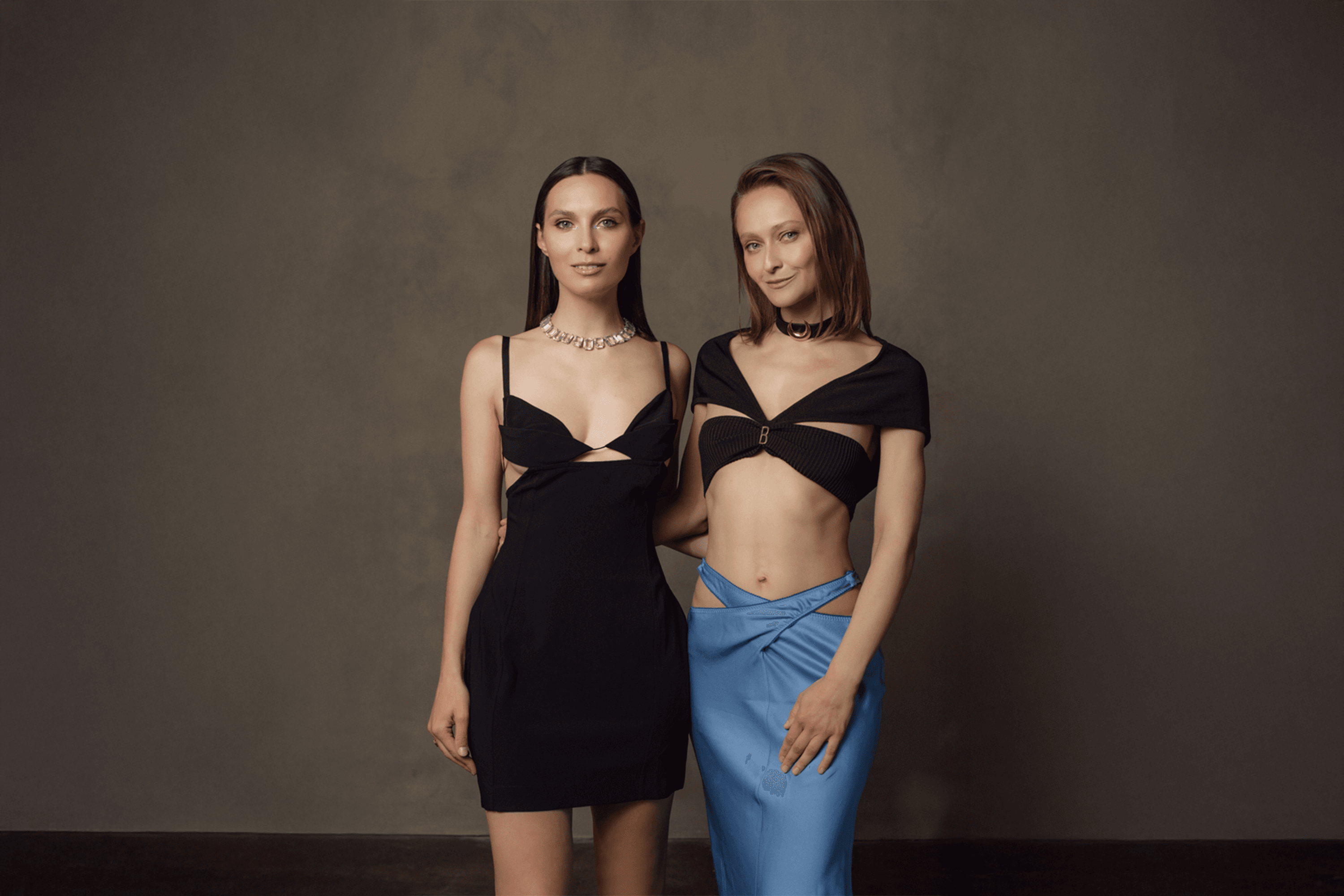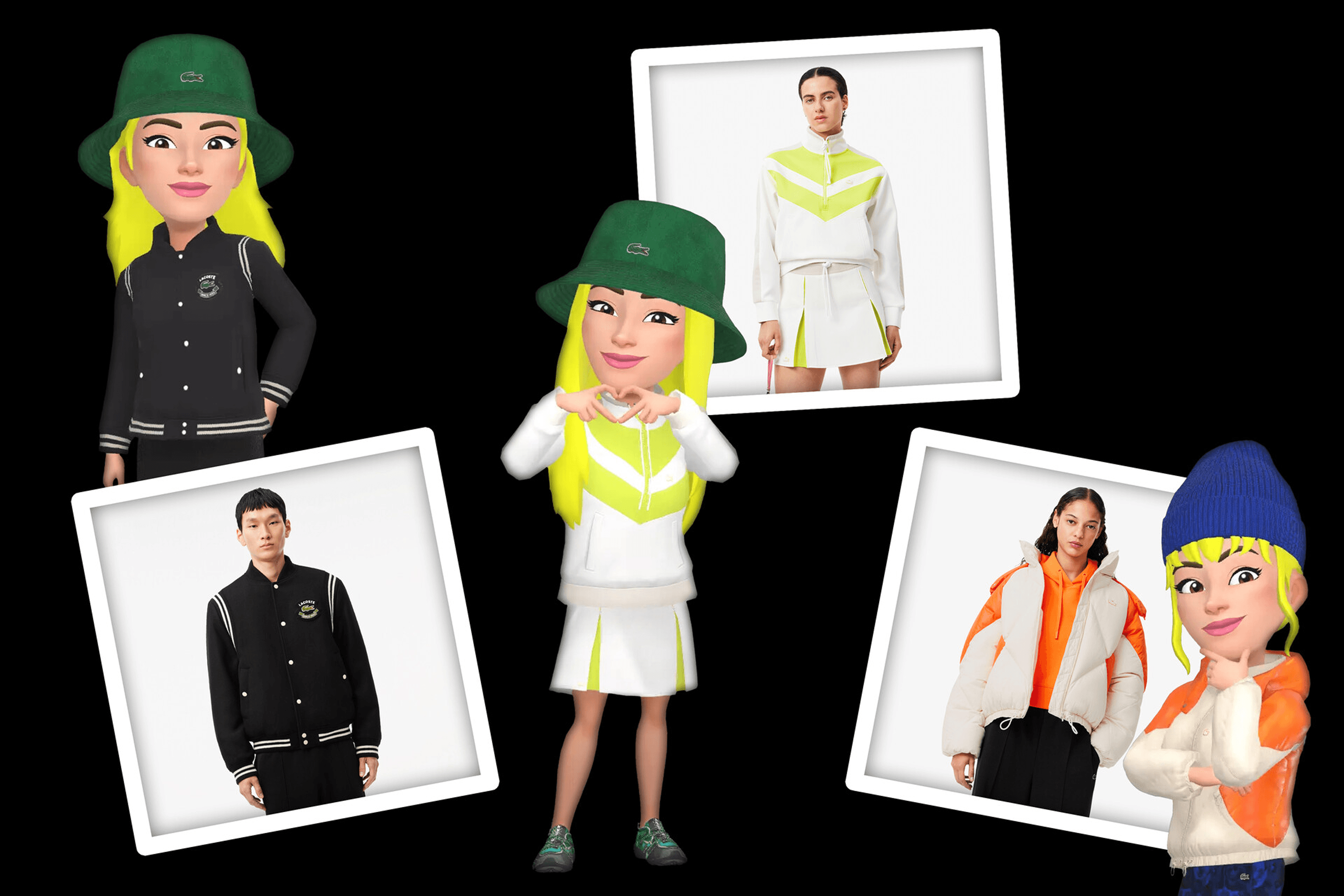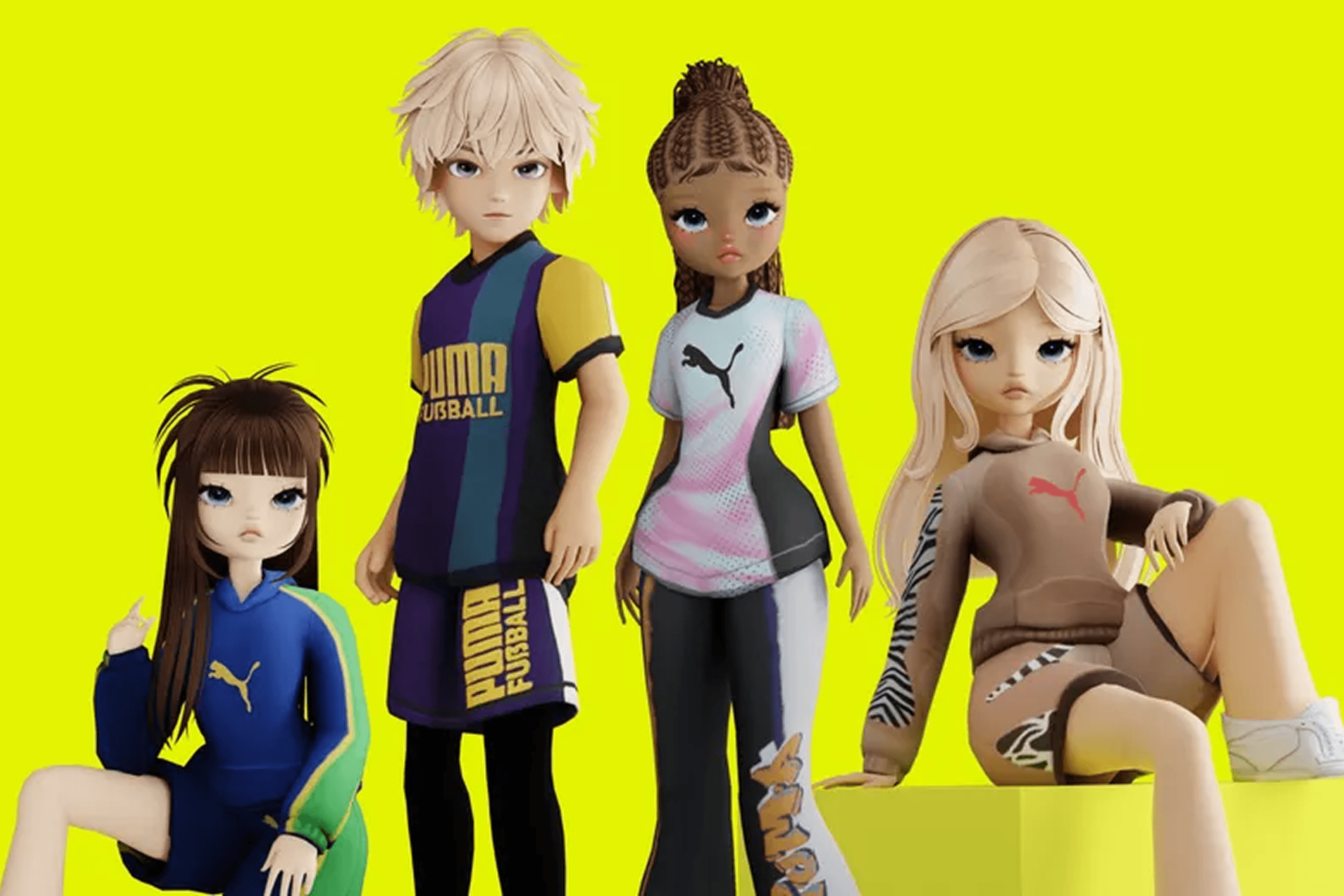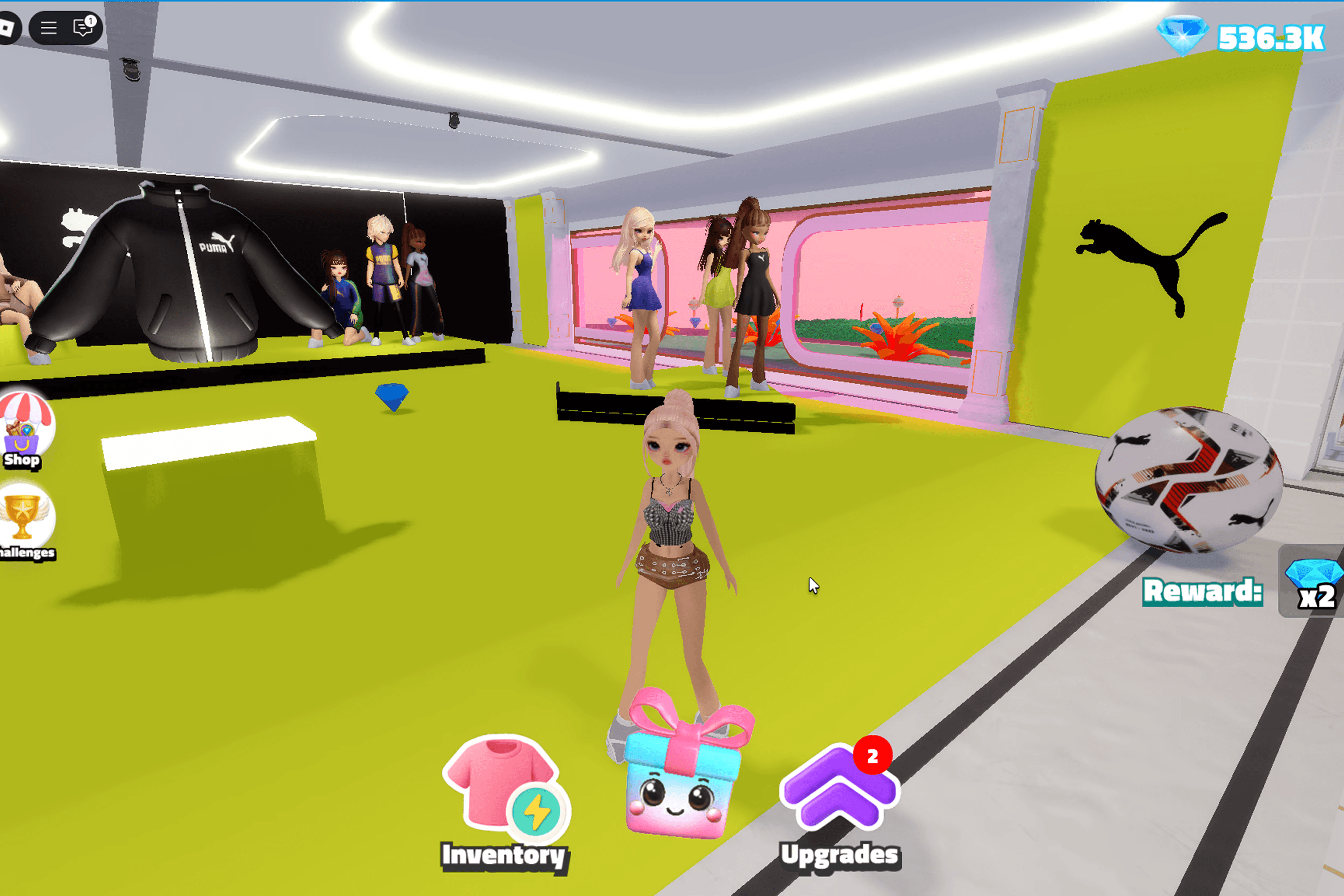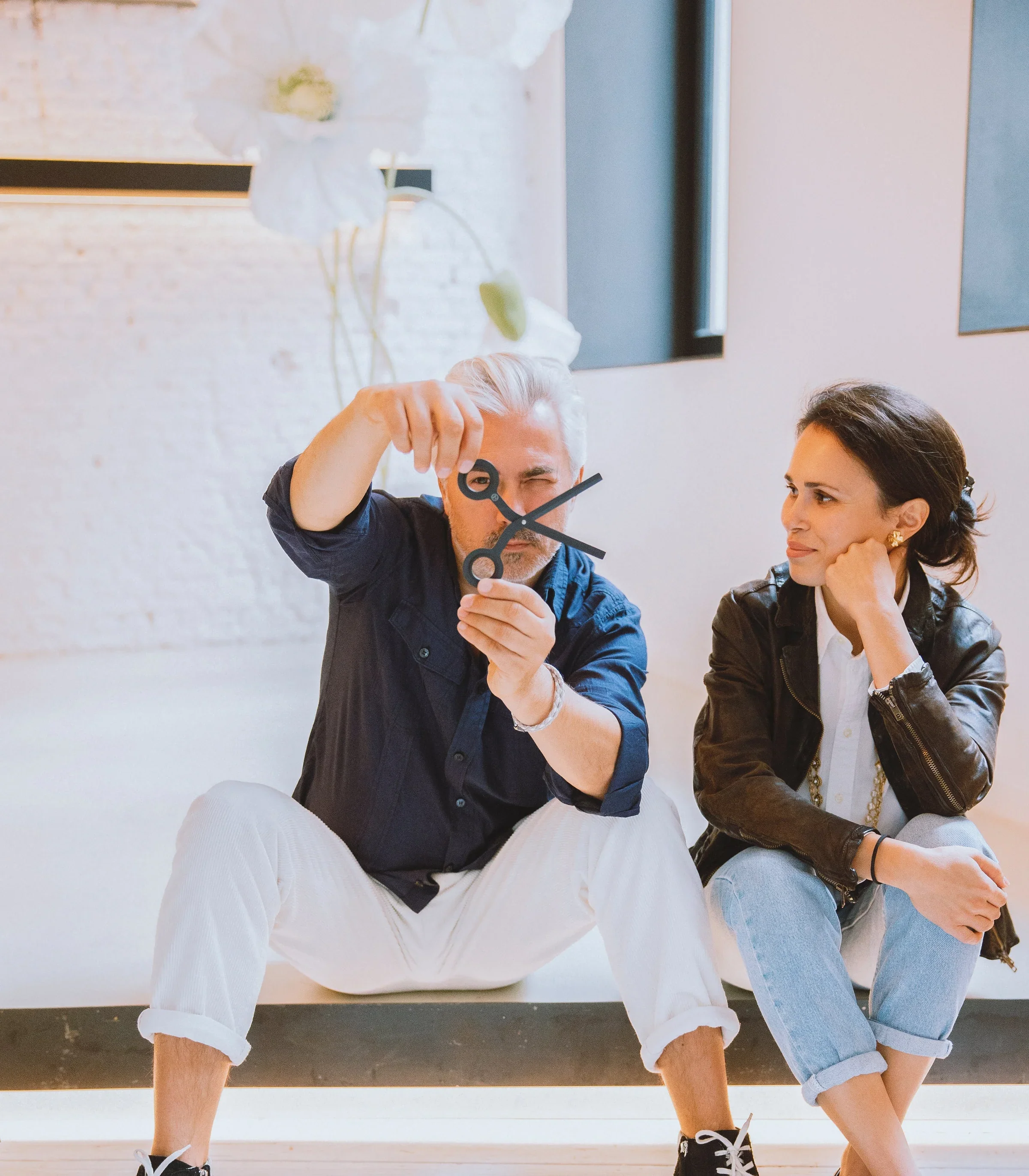In 2020, Ukrainians Daria Shapovalova and Natalia Modenova decided to create the first digital clothing marketplace — DRESSX. There, users can try on digital garments from global brands or style their avatars for social media. DRESSX is actively integrating into the metaverse: the brand’s collections are available on Meta and Roblox, and its commercial model provides royalties to fashion houses for every transaction. DRESSX collaborates with H&M, Tommy Hilfiger, Bershka, Jason Wu, Diesel, Dundas, and others. YBBP journalist Roksana Rublevska spoke with the co-founders of DRESSX about their partnership with Meta and fashion brands — and why, in the end, each of us will have our own digital wardrobe.
- More than 100 million digital looks have been shared.
- Users have built more than 315,000 meta-wardrobes.
- The DRESSX platform has showcased the work of 400 designers and created over 4,000 digital looks.
- Over $17 million have been invested in the project.
Daria, first question for you: how did 15 years in traditional fashion bring you to the digital world?
Daria Shapovalova: After working in the fashion industry, from hosting my own TV program to organizing Mercedes-Benz Kyiv Fashion Days and a showroom in Paris, my partners and I saw that the market was undergoing a systemic transformation. We realized that fashion needed a new direction: technological, ethical, and conscious. In 2017, I went to San Francisco to pursue an MBA at Hult International Business School. I wanted to immerse myself in the tech environment and see firsthand how the world that sets the tone for innovation works. A few years later, the pandemic hit. It became clear that it was time to create a new way to ‘wear’ fashion. That’s how the idea for DRESSX was born.

We launched the first 3D clothing models that users could “try on” simply by uploading a photo. Most people understood the idea right away, and the interest was tremendous. By the time we launched the first version of the product, we had already raised $100,000 through fundraising.
Was it like an online fitting?
D.S.: No. We weren’t trying to match sizes or styles. We were creating an alternative to physical clothing for situations where it isn’t really necessary, for example, for social media content. The three of us — Natalia Modenova, Yulia Krasnienko, who had extensive experience in the tech field, and I — built the first version of DRESSX from scratch.

How do you explain why people need digital fashion if most still want to experience physical items?
D.S.: Reality has changed. If you’re creating content for social media, you don’t necessarily need a physical item to express yourself. This is a new form of consumption that is less harmful to the planet.
Natalia Modenova: In 2019, we tested the concept through a pop-up in Los Angeles. People tried on clothes while simultaneously creating social media content. That’s when we realized that a significant portion of clothing today is purchased solely for photos. And if content is the main goal, why produce physical clothing at all? We decided a digital version would be entirely sufficient.

Digital fashion is developing as a complement to physical clothing, but also as an independent category. In the future, each of us will have our own digital wardrobe, and many already have one.
How does DRESSX operate today?
N.M.: We operate at the intersection of the fashion and technology industries, with two main directions. The first is clothing for avatars and gaming. The second is AI infrastructure — a set of solutions based on artificial intelligence.
We create digital looks under our own brand, DRESSX, for platforms such as Snapchat (Bitmoji), Meta (Instagram, Facebook, Horizon Worlds, WhatsApp), Roblox, and the popular Asian social network Zepto. There, users can “wear” our clothing through their virtual avatars.
In the physical world, you need seamstresses, factories, and logistics. In our case, we have a team of designers, 3D artists, and technologists, each specializing in a specific platform because the requirements for Roblox, Snapchat, and Meta differ.
We create digital collections for global brands — Lacoste, Diesel, Charles & Keith, Puma — and release new looks every month. This is not just an “app”; it is an entire ecosystem business that brings together platforms, technology, fashion, and creativity.
How does DRESSX collaborate with brands?
N.M.: For our Avatar Fashion direction, it’s a licensing business. The brands we work with receive a share of the revenue from sales, while we hold the rights to create and distribute branded collections in the metaverse. For example, Diesel’s collection is available on the Meta platform, and the brand earns royalties from each transaction. This commercial model allows the brand to retain its intellectual property while profiting from digital clothing.
What about DRESSX’s other direction — AI-based try-ons?
N.M.: That’s a separate tech division of the company. There’s no 3D modeling involved — everything is based on generative AI models developed internally at DRESSX. Users can try on a digital look using their own photo to see how the real item would appear. In this case, the brand only earns revenue from the actual purchase of the physical product, not the try-on.
Could you tell us more in detail about DRESSX Agent, whose launch has already been announced?
N.M.: DRESSX Agent is a chatbot where you can find, try on, and purchase physical clothing in partnership with brands. It’s a GPT-like interface combining search, AI try-on, and online shopping. Club members have access to all features, with the main one being virtual try-ons. Since September, the service has been available to the general public. In the future, we plan to add features that will allow not only trying on clothing with your photos but also viewing videos with virtual try-ons. This will provide an even more realistic experience.
How does the process of purchasing physical items through DRESSX work?
N.M.: When a user tries on virtual clothing on the DRESSX site and is ready to make a purchase, they click the “Buy” button. The platform automatically directs the buyer to the brand’s official website, where the purchase is completed. We receive a percentage of the sale.
How were you able to build partnerships with brands? Daria, did your past experience and personal connections in the fashion world play a key role?
D.S.: Absolutely — we leveraged a few personal connections to get started. From the very beginning, we reached out to everyone we knew and drew on all our experience in the global fashion industry. DRESSX received significant media attention. By the second week after launch, major publications, including the American Forbes, had written about us. This made it much easier to access partnerships with top brands. We weren’t just relying on connections, though.

Can you name specific brands that you were able to engage thanks to your past personal connections?
D.S.: Diesel — they are long-time friends of mine, and that partnership was a direct continuation of our personal relationship. There were also contacts that didn’t result in immediate collaborations but paved the way for other partnerships.
Which was the first luxury brand to join the project?
N.M.: Farfetch was one of the first luxury-market players to take an interest in DRESSX. This partnership happened early on and was particularly important because it led to collaborations with Balenciaga, Dolce & Gabbana, Palm Angels, Nanushka, and Burberry. They became interested in our innovative product.
From a financial and strategic perspective, do you find it more interesting to work with mass-market brands like Zara or with high-end luxury brands?
N.M.: We’re interested in working with partners who share our vision. First and foremost, we are a technology company collaborating with the fashion industry. That’s why partnerships with Electronic Arts, Ubisoft, Meta, and Snapchat are a natural fit for us.
Meta is known for being open to external partnerships. How did you manage to build a collaboration with them?
D.S.: Through advisors and investors — it was a personal connection. At that time, we already knew Meta was preparing to launch avatars, and at DRESSX we were already positioning ourselves as the first digital fashion platform. So the idea of offering to create clothing for their avatars felt completely natural. We pitched the idea — and that’s how our partnership began. Today, it has grown into a large-scale technological collaboration across several levels. In 2025, we’re launching a major joint project. The details are still under wraps, but it’s sure to be a breakthrough.
In its first year, DRESSX expanded from 30 pieces of digital clothing to 1,500. How did you scale your assortment so quickly?
N.M.: That was our first version, when we operated as a marketplace. We created our own items but also opened the platform to digital clothing designers. Many wanted to be featured on DRESSX and submitted their collections to us. We supported their creativity, and that’s how our catalog began to expand. Today, most of our scaling comes from internal production. We have established production pipelines adapted to different platforms, and not every designer can meet these requirements.
What is the biggest challenge in building a company like this? And what difficulties do you face in partnerships?
D.S.: The hardest part is not stopping. Something is constantly breaking — internally, in processes, in technology. But the main thing is to fix everything on the go and keep moving forward. Partnerships are important, of course, but the company isn’t built solely on them. It depends on the daily efforts of dozens of people who, ‘under the hood,’ handle technical problems, test solutions, spot errors, and correct them before users notice. And if they do notice — we make sure it doesn’t happen next time.

N.M.: DRESSX is a U.S.-based company, fully compliant with all the laws and standards of the venture industry. According to PitchBook, startups founded exclusively by women received only 2% of all venture investments in 2023. We belong to that rare category: a company founded by a woman that has already completed its first major investment round — a Series A. Every next step for us is not just a victory, but also proof that even in the most challenging conditions, it’s possible to build a global-scale tech business, even without engineering experience among the founders. Nowadays, you can learn almost anything quickly.
How has DRESSX’s strategy changed over the past five years? Was there anything that had to be radically reconsidered?
D.S.: A company valued at a billion dollars — that’s the scale of our thinking. t’s about creating a product that billions of people around the world can use. Look at Silicon Valley companies: they are valued at $1 billion even before they generate real revenue. It’s about potential, impact, and a vision for the future. We are building a company that can change the fashion industry.
How is fashion consumption changing among Generation Alpha?
N.M.: In fact, DRESSX users, especially the younger audience, don’t focus on brands per se. It’s no longer about “I have a Birkin bag, even if it’s in 3D.” For them, digital fashion is a way to express their uniqueness, show belonging to niche online communities, and demonstrate awareness of fleeting micro-trends. It’s a fundamentally different vision of fashion. Generation Alpha — the youngest segment of our audience — actively creates and updates their digital avatars, has multiple looks, and doesn’t limit themselves by gender or forms of self-expression. It’s about freedom of choice and having options for quick changes.
Which Ukrainian brands are you currently collaborating with?
D.S.: Etnodim, Bevza, and TTSWTRS are just a few of our partners.
N.M.: We often test our products with founder friends at brands such as Zhilyova and Paskal. On the Bitmoji platform, we’ve also created a special DRESSX x TTSWTRS collection. It demonstrates our commitment to supporting Ukrainian brands and promoting them in the digital world.
How do you maintain the exclusivity and value of digital clothing in an era where everything can be easily copied or generated?
D.S.: Creating any digital clothing isn’t easy. While copying does happen in the digital world, it’s not currently a serious threat to business. In the physical world, large brands and small local designers suffer from cheap knockoffs that undermine their revenue. In digital fashion, it depends largely on platforms and partnerships with brands, which create an additional barrier against unauthorized copying.
The digital fashion market is still relatively underdeveloped on the B2C side, and the entry barrier for a digital designer is much lower than in physical fashion. But that doesn’t mean anyone can simply enter this niche. For example, we’ve repeatedly encountered copies of our products on various platforms, yet that hasn’t stopped us from staying leaders and growing our business.
Has consumer behavior around digital clothing changed over the past two years with the rapid development of artificial intelligence?
D.S.: Yes. Many people previously couldn’t even imagine creating a unique dress using generative tools. For example, our product allows users to generate a dress based on a description or modify their look in a photograph. This works to our advantage.
Moreover, competition in the market is always a driver of growth. The emergence of new players, who challenge each other to adopt innovations, positively impacts the entire sector. For us, it’s more concerning when a digital fashion company shuts down than when a new one opens.
Which markets are you active in, and where do you plan to expand next?
D.S.: Our products are available in almost every country. We are most active in the U.S., France, the U.K., Germany, and India. We plan to scale in markets where digital products receive the strongest response.
